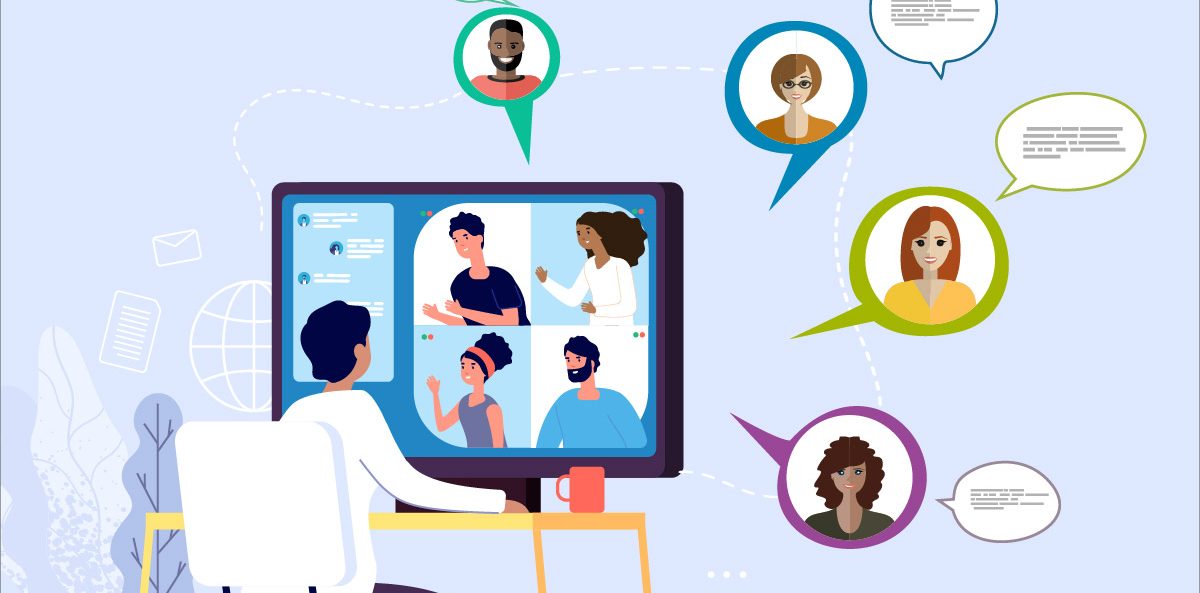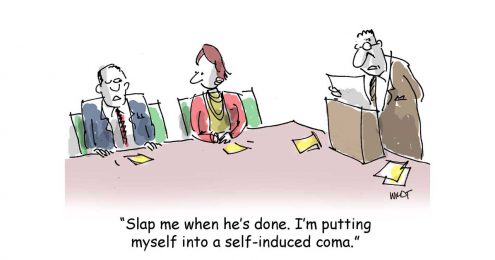During the last week, one client cancelled a three-day event, which was to include a day of strategic planning, a full-day board meeting, and a professional symposium.
Another client cancelled a two-day board retreat, one of the only times each year this national board meets in person.
In one case a board chair and in another an executive director described what they saw as an either/or proposition.
“Seems we have two options. Either we are going to cancel and reschedule or figure out some way to do this virtually.”
I wasn’t certain we had all the options on the table. Sure, the organization could decide to reschedule. But in this uncertain environment where we learn new things by the hour, there seemed to be some risk in that option too.
But I had a bigger problem with the second option – figuring out how to do the same meeting virtually. For me, converting an in-person gathering into a virtual setting is a losing proposition. You can’t simply take an in-person agenda and deliver on the meeting’s goals via phone or video conference.
I believe that meetings, designed as virtual gatherings, can be very valuable. As valuable as in person? An unfair comparison if you ask me.
You have to design each type expecting different outcomes. Valuable in different ways. And in this post, I offer a downloadable resource to help you to generate the creative thinking necessary to design a creative virtual gathering.
How about an example and then off to the download I hope will be helpful.
THE IN PERSON BOARD MEETING
Let’s use an example of an in-person board meeting that gets cancelled. Then we’ll tease out the options.
The Original Plan
An in-person two day board meeting was all set. Amazingly, everyone had planned to come. The agenda included:
- An E.D. report
- A presentation and discussion by the strategy planning consultants
- An inspiring presentation of an innovative new initiative funded by a prominent foundation.
- Committee reports
A dinner had been scheduled for the evening prior to the meeting start. The goal was to nurture board cohesion.
So the meeting gets cancelled. If the board wants to shift to video conferencing, what are the options?
Option 1: “Everything In Less Time”
Basically, the idea is to recreate the original meeting as closely as possible, but just faster. What does that mean in practice?
- So much for dinner together!
- Tell every person on the agenda that they just need to do their “thing” in less time
Voila. Same board meeting but in ⅔ the time. But is it really the “same?” Methinks not.
Option 2: “Do Only What Is Most Important”
This option addresses the concern that board members will not stay focused. So we find two 3-hour blocks and cut the meeting in half to attempt to keep folks’ engagement.
Option 3: “Total Rethink”
Finally, with this option we need to get creative.
- E.D. and Board Chair evaluate the goals they set for the original meeting (a topic for another post if you don’t have ‘em)
- Executive Committee and E.D. meet to talk about how to meet those goals virtually. This may or may not include all the agenda items. It may include different ones that were not on the original agenda. You design based on the goals and new format.
And voila. You have created a virtual gathering with goals and you have designed an experience that met those goals. The meeting, because of the different format, ended up being uniquely engaging and the time went by quickly.
“TOTALLY RETHINK” – A DEEPER DIVE
Let’s dig a bit deeper on this 3rd option. Here’s what it might look like:
- Engage board members through a thoughtful discussion of a new 3-year vision that has an opportunity to kick the tires and offer meaningful input.
- Inspire board members with the introduction of a new initiative and instill confidence in staff.
- Inform the board with a substantive E.D. presentation – ‘The State of the Organization’.
- Hold committee chairs accountable by asking for brief presentations.
Now what did the organization do differently to meet these goals? Quite a few things…
A Different Structure/Format
- Broke the meeting into two 2-hour video conferences, roughly a week ahead
- No presentation by anyone longer than 15 minutes – attention span is much lower when virtual
- E.D. report is required to be shorter and more engaging with use of video, press, photos. Presentation should include 3-4 items that the E.D. see as challenges and perhaps these can be discussed
The Right Platform
- A conference call is off the table from the get go. They knew it had to be video
- Members were required to use a video conference software like Zoom (the best that I’ve used by far IMHO)
Emphasis on Pre-Reads/Work
- Committee chairs were asked for 2-page written reports about progress to date and what board members can expect before the next meeting. No presentations
Strong Facilitation
- This is a big job and not easy – to keep everyone engaged and actively work to solicit input and ideas from all members
- Facilitator worked closely with strategy consultants and together they designed a different structure to take advantage of video and the use of video breakout rooms available through Zoom
Second Meeting as a Follow Up
- Schedule a second video conference that is in the service of igniting board members to cultivate, educate and share their enthusiasm about your organization in their networks.
- The goal of this second gathering is to inform and excite board members about the programs – current and planned – and to ignite them to be external champions. Tie that together with a session run by Development that asks each board member to practice the organizational elevator pitch with the presentation as the basis
WAS THIS GATHERING AS PRODUCTIVE AS THE IN-PERSON WOULD HAVE BEEN?
Short answer is no. But mighty close. Why?
- It was designed with more emphasis on keeping the attention of the board members rather than assuming it (and being frustrated when you don’t get it)
- Meeting goals were very clear – had to be to ensure that board members felt they had value to add.
- Strategy firm received smart feedback and general buy-in on the vision
- Presentations were shorter, more engaging and enjoyable, designed with the audience in mind
But the real victory was in getting it done. Having learned what worked and might have been more effective, the organization is now poised to have meetings via video. Committee meetings and special board meetings for example.
I worked with a client that did professional symposia and for decades did them in person. There had long been discussions about how many more could be done, and how much more cost effectively, if they could be done virtually. But there was some resistance (it won’t work, lack of time, disgruntled attendees).
For my client, I can’t be sure just yet if it will work. But guess what?
The circumstances forced innovation. The team had to look at how something might be done differently and in so doing created a new opportunity for the organization to reach and engage stakeholders Geography was less an issue, allowing for a global expert to attend. The cost was lower, allowing for the organization to offer these opportunities to members more frequently. And the presenters gave higher quality presentations that were well received and more engaging.
The moral of the story: The video gathering will only be subpar if you treat it as a video version of the meeting you planned. But if you change your mindset, keep your eyes on the goal and brainstorm (with no ideas rejected out of hand), you might come up with a new way to gather – another tool in your engagement arsenal.
THE DOWNLOAD
So here is the download I promised you. It’s called Guidelines for a Valuable Virtual Gathering.
NAVIGATING THE CRISIS
At the time this post was published, the COVID-19 pandemic is raging worldwide and affecting nonprofits of all sizes in a major way. Over the coming weeks I plan to focus my blog entirely on thoughts and advice designed to help nonprofits navigate through this crisis. I hope you’ll jump onto my email list so I can let you know each time a new post goes live. Please know how much I support you and let’s hope we’re on the other side of this as soon as possible.



